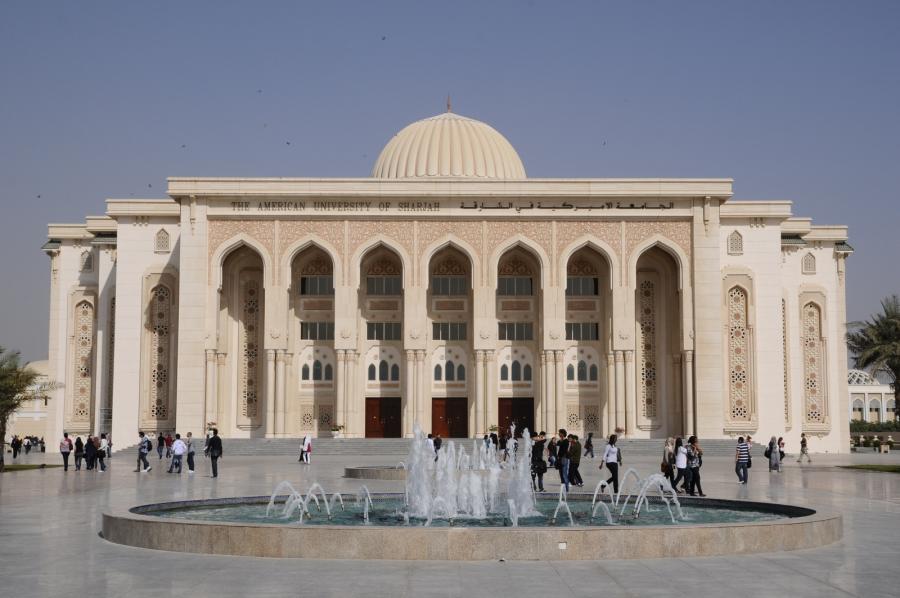- About
- Admissions
- Study at AUS
- Prospective Students
- Bachelor's Degrees
- Master's Degrees
- Doctoral Degrees
- Admission Publications
- International Students
- Contact Admissions
- Grants and Scholarships
- Sponsorship Liaison Services
- Testing Center
- New Undergraduate Student Guide
- New Graduate Student Guide
- File Completion
- New Student Orientation
- Payment Guide
- Executive Education
- Students with Disabilities
- Academics
- Life at AUS
- Research
- Contact Us
- Apply Now
- .

AUS researchers propose new approaches to disinfection strategies against COVID-19
Disinfection strategies against COVID-19 must target the virus as well as hosting amoeba, according to Dr. Naveed Khan and Dr. Ruqaiyyah Siddiqui from the Department of Biology, Chemistry and Environmental Sciences at American University of Sharjah (AUS). They also believe that the virus has the potential to manifest in an aggressive second wave, hence there is an urgent need to develop therapeutic and preventative measures.
In results published in three papers (“War on Terror Cells: Strategies to Eradicate ‘Novel Coronavirus’ Effectively”, “Novel Coronavirus: Current Understanding of Clinical Features, Diagnosis, Pathogenesis and Treatment Options”, and “Centralized Air Conditioning and Transmission of Novel Coronavirus”), Dr. Khan and Dr. Siddiqui warn of the role that centralized air conditioning and amoebae can play, discuss the impact of a second wave of the virus, and propose various approaches to eliminate it.
“One aspect to consider about COVID-19 is whether the virus can become dormant, as is the case with HIV, causing latent infections and re-activating after a while to continue spreading,” said Dr. Siddiqui.
This concern is shared by Dr. Khan, who elaborated: “What if those who fully recovered continue to have the virus in a dormant state before the virus comes back more aggressively? COVID-19 is a notorious virus and used its first phase to spread, but it mutates. We believe it is likely to be here for two years and will come back more aggressively in a second wave.”
Speaking about the nature of the virus, Dr. Khan added:
“In the microbial world, organisms regularly antagonize or collaborate with other microbes. In this regard, one of the most widely distributed organisms in the environment is Acanthamoeba, which can survive harsh conditions by changing its form to a hardy shell, known as ‘cyst form’. These cysts are airborne and are capable of surviving temperatures as high as 70°C, ultraviolet radiation and commonly used disinfectant; and they host viruses, bacteria, protozoa and fungi inside to provide protection and transmission.”
One of the challenges with current disinfection approaches is that bacterial disinfectants are not effective in killing this amoeba. Accordingly, the two researchers propose disinfection strategies that target both the virus as well as the host amoeba cysts.
“The proposition of employing anti-amoebic approaches in eradicating novel coronavirus should be considered in addition to the current measures which are by no means futile and are proving successful in reducing the number of episodes of infections overall,” said Dr. Siddiqui.
However, there is need for further work to determine the degree to which COVID-19 can survive or multiply inside the amoeba. “Based on earlier work, it is highly likely that this would be the case. Hence, effective disinfection strategies should be against both,” said Dr. Khan.
Further, the research showed that the amoeba is present in air cooling systems, making it vital for disinfection strategies to target both the virus as well as the host that harbors the viruses and other bacterial pathogens.
“Air cooling systems can provide another means for microbes to linger on during the summer months,” noted Dr. Khan.
Speaking about the research, Dr. Siddiqui said: “We are interested in how microbes develop a symbiotic relationship to ensure their species survival. Viruses are totally dependent on other species to survive, and it is not in their interest to kill their host. If the host dies, then the virus will die. We need to understand how such dependent species can survive in the environment. It is possible that they have association with other species to survive and continue to thrive.”
She added that there is much to be learned from other species that have “adapted, survived and evolved under testing conditions.”
According to Dr. Khan: “Humans have been on this planet for 50,000 or 70,000 years, meanwhile other species such as crocodiles and cockroaches have been around for more than 300 million years. It would be interesting to understand their molecular defensive mechanisms and learn from that. Look at cockroaches, for example. These can tolerate nine times the amount of radiation humans can. So, what is it that can make these species survive and evolve, and how can we benefit from that?”
ENDS

